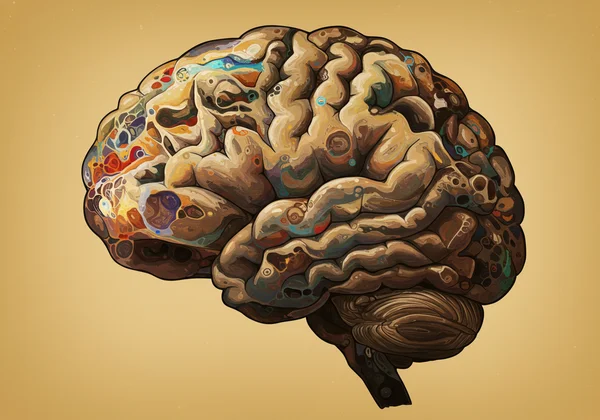OCD Subtypes: A Guide to Different Types and How an OCD Test Can Help
Obsessive-Compulsive Disorder (OCD) is often misunderstood, frequently reduced to a stereotype of hand-washing or extreme neatness. While these can be symptoms, the reality of OCD is far more complex and varied. Many struggling with intrusive thoughts and compulsive behaviors don't realize they might have OCD because their symptoms don't match public perception. How to know if I have OCD? This is a question that often begins a journey of self-discovery, and understanding the different manifestations, or subtypes, is a crucial first step.

This guide will explore the diverse world of OCD subtypes, helping you recognize patterns that go beyond the stereotypes. While reading, if any of these themes resonate with you, consider taking a confidential self-assessment as a supportive next step in your journey toward clarity.
What Exactly Are OCD Subtypes?
Before diving into specific themes, it's important to understand that "subtypes" are not official diagnoses. Rather, they are labels created by the OCD community and therapists to categorize common themes of obsessions and compulsions. They provide a helpful shorthand for understanding how OCD can manifest in different people’s lives.
Beyond the Stereotypes: Why OCD Isn't Just Hand Washing
The common image of OCD fails to capture the internal torment that defines the condition. OCD can latch onto anything a person values: their relationships, morality, health, or safety. Understanding the various subtypes helps to validate these often-invisible struggles and shows that you are not alone in your experience.
The Core Components: Obsessions, Compulsions, and Avoidance
Regardless of the subtype, OCD is characterized by a vicious cycle of three key elements:
- Obsessions: Unwanted, intrusive, and persistent thoughts, images, or urges that cause significant distress and anxiety.
- Compulsions: Repetitive behaviors or mental acts that a person feels driven to perform in response to an obsession. The goal is to reduce anxiety or prevent a feared event.
- Avoidance: Steering clear of people, places, or situations that might trigger obsessions.
Understanding "Pure O" (Purely Obsessional OCD)
One of the most misunderstood forms of OCD is "Pure O." This term can be misleading, as it suggests the absence of compulsions. In reality, the compulsions are simply internal and not visible to others.

Deconstructing the Myth of "No Compulsions": What is Pure O?
Mental compulsions are the hallmark of Pure O. Instead of performing a physical ritual, a person with Pure O engages in hidden mental acts. They might endlessly analyze thoughts, try to neutralize a "bad" thought with a "good" one, or mentally repeat phrases to seek reassurance.
Common Intrusive Thoughts & Mental Rituals in Pure O
Obsessions in Pure O are often of a violent, sexual, or religious nature that is completely opposite to the person's true values. The compulsions involve intense mental efforts to disprove or undo these thoughts, which only reinforces their power.
Contamination OCD & Washing Compulsions
This is the most widely recognized subtype, but its scope is often broader than simple germaphobia. The fear can extend beyond germs to include emotional or metaphysical contamination.

Fear of Germs & Impurity: Defining Contamination OCD
The core obsession in this subtype is an overwhelming fear of being contaminated by germs, dirt, chemicals, bodily fluids, or even "bad luck." This fear leads to intense anxiety about getting sick or spreading contaminants to others.
Typical Obsessions and Cleaning Rituals
Compulsions often involve excessive washing of hands, body, or objects. This can become so severe that it leads to skin damage. Other compulsions include avoiding public places, refusing to touch doorknobs, or changing clothes frequently. If these patterns feel familiar, an online OCD test can offer initial insight.
Relationship OCD (ROCD): Obsessions in Love
Relationship OCD (ROCD) targets a person’s most intimate connections, filling them with doubt and anxiety. It can focus on one’s feelings for a partner or the partner’s feelings for them.
When Love Becomes Obsessive: What is ROCD?
ROCD involves persistent, unwanted doubts about the "rightness" of a relationship. Sufferers constantly question their love for their partner, their attraction to them, or their partner’s suitability, despite there being little to no actual evidence of a problem.
Common Doubts & Checking Behaviors in Relationships
Compulsions include constantly comparing your relationship to others, mentally reviewing past moments for "proof" of your love, seeking reassurance from friends, or "testing" your feelings by looking at attractive strangers.
Harm OCD: Intrusive Thoughts of Violence
Harm OCD is characterized by intrusive, unwanted thoughts or images of causing harm to oneself or others. These thoughts are terrifying because they are ego-dystonic—meaning they are the complete opposite of the person's character and desires.

Unwanted Thoughts of Causing Harm: Understanding Harm OCD
Someone with Harm OCD might have a sudden, horrific image of pushing a loved one into traffic or using a kitchen knife to hurt someone. They live in constant fear that they might lose control and act on these thoughts, even though they have no intention to do so.
Mental Review & Avoidance Compulsions
Compulsions include hiding sharp objects, avoiding being alone with loved ones (especially children), and mentally reviewing past actions to ensure no harm was done. They may also seek constant reassurance that they are not a bad or dangerous person. Recognizing these specific patterns is a key part of understanding your mind, and a free OCD symptoms test can be a helpful tool in this process.
Moral Scrupulosity & Religious OCD
This subtype centers on obsessions with morality and religion. The individual is plagued by an intense fear of being or having been sinful, unethical, or immoral.
Extreme Guilt & Moral Doubt: Defining Scrupulosity
A person with Scrupulosity holds themselves to an impossibly high moral standard. They may obsess over minor past mistakes, worry they have blasphemed, or fear they have accidentally broken a religious or ethical rule.
Compulsive Confession & Seeking Reassurance
Compulsions often involve excessive prayer, repeatedly confessing perceived sins to religious figures or family members, and seeking constant reassurance that they are a good person. They may also avoid situations that could challenge their moral resolve.
Symmetry & "Just Right" OCD
This subtype involves a powerful need for things to be perfectly ordered, aligned, or balanced. The feeling that something is "not right" can cause immense distress until it is corrected.

The Need for Order & Perfection: Symmetry & Just Right OCD
The obsession here is not just a preference for tidiness but an urgent need for things to feel "just right." This can apply to objects on a desk, the way words are spelled, or even the balance of one's own body movements.
Arranging, Ordering & Repeating Behaviors
Compulsions include constantly arranging and rearranging objects until they feel perfect, rewriting words, or repeating actions until the "just right" feeling is achieved. This can be incredibly time-consuming and disruptive.
Rumination OCD: Endless Loops of Thought
Rumination involves getting stuck in a prolonged, repetitive, and unproductive loop of thinking about a question or problem without ever reaching a satisfying conclusion.
Getting Stuck in Mental Analysis: Understanding Rumination OCD
While everyone ruminates occasionally, in OCD it becomes a primary compulsion. The person gets trapped analyzing philosophical, existential, or unanswerable questions, such as "What is the meaning of life?" or "How do I know what is real?"
The Cycle of Endless Questioning & Problem Solving
The mental analysis is the compulsion. Individuals believe prolonged thought will yield a perfect answer and relief, but this only fuels the obsession.
Why Understanding Your Subtype Matters
Learning about the different OCD subtypes is more than an academic exercise. It’s a vital step toward self-compassion and effective action.
Recognizing Patterns for Better Self-Awareness
When you can put a name to your experience—like ROCD or Harm OCD—it can be incredibly validating. It helps you understand that you are not your thoughts and that what you are experiencing is a recognized pattern of a treatable condition. This awareness is the first step toward breaking the cycle.
Guiding Your Path to Professional Support
Knowing your specific subtype can help you find the right kind of professional help. You can look for a therapist who specializes in OCD and, more specifically, has experience with your particular theme. It empowers you to articulate your struggles more clearly, leading to more targeted and effective treatment.
Taking Your Next Steps: From Awareness to Action
Obsessive-Compulsive Disorder wears many masks, and understanding its varied themes is a powerful tool for demystifying your experiences. Recognizing your potential subtype helps you realize you are not alone and empowers you to articulate your struggles more clearly, paving the way for targeted and effective support.
Remember, this guide is for informational purposes only and is not a substitute for a professional diagnosis. If you see yourself in these descriptions, it may be a sign to seek further understanding. A great, no-pressure starting point is to try our free tool to get a clearer picture of your symptoms. Your journey to understanding begins with a single step, and we are here to support you.
Frequently Asked Questions About OCD Subtypes
What are the main categories or "4 types" of OCD often discussed?
While there are many subtypes, they are often grouped into four general categories: 1) Contamination and Washing, 2) Harm Obsessions and Checking, 3) Symmetry and Ordering, and 4) Unacceptable/Taboo Thoughts (which includes many Pure O themes like religious or sexual obsessions).
How can I tell if my symptoms are OCD or just general anxiety?
The key difference often lies in the presence of compulsions. While general anxiety involves excessive worry, OCD involves specific, intrusive obsessions that trigger repetitive compulsive behaviors (either physical or mental) aimed at neutralizing the distress. The OCD cycle is distinct from the free-floating worry of general anxiety.
What are common triggers that can worsen OCD symptoms?
Triggers are highly individual but often include stress, lack of sleep, major life changes (like starting a new job or having a baby), or direct exposure to the subject of an obsession (e.g., seeing a news report about a disease for someone with Contamination OCD).
How do I know for sure if I have an OCD subtype?
The only way to know for sure is to receive a comprehensive evaluation from a qualified mental health professional, such as a psychologist or psychiatrist. Online screening tools can be a valuable first step to organize your thoughts and decide if you should seek professional help. If you're curious, you can start your self-assessment on our website today.